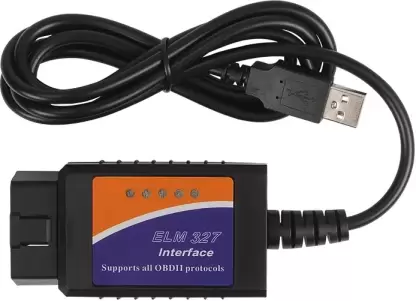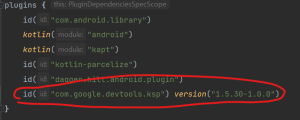The ELM-USB interface is a versatile and popular tool used for diagnosing and troubleshooting automotive problems. It is a simple and cost-effective solution that allows users to connect their computer to their vehicle’s onboard diagnostics (OBD) system.
The ELM-USB interface is built around an ELM327 microcontroller, which is capable of communicating with the OBD system in a vehicle. The interface provides a standard USB interface that can be connected to a computer, and it also includes a standard OBD-II connector that can be plugged into a vehicle’s diagnostic port.
One of the most significant advantages of the ELM-USB interface is its ease of use. Once connected, the interface can be used with a wide range of software applications that are available for diagnosing and troubleshooting automotive problems. Some of the most popular software applications include ScanTool.net, FORScan, and Torque.
The ELM-USB interface is also highly customizable. Users can modify the firmware on the ELM327 microcontroller to add new features or to customize the behavior of the interface to meet their specific needs. This level of flexibility makes the ELM-USB interface a popular tool among automotive enthusiasts and professionals.
In addition to its flexibility and ease of use, the ELM-USB interface is also a cost-effective solution. While some diagnostic tools can cost thousands of dollars, the ELM-USB interface can be purchased for just a few hundred dollars. This makes it an affordable option for DIY mechanics and small repair shops.
Overall, the ELM-USB interface is an excellent tool for diagnosing and troubleshooting automotive problems. Its ease of use, flexibility, and affordability make it a popular choice among automotive enthusiasts and professionals. If you’re looking for a cost-effective solution for diagnosing and troubleshooting automotive problems, the ELM-USB interface is definitely worth considering.
The ELM-USB interface is often used in conjunction with software applications that are designed to interface with the vehicle’s OBD system. These software applications can be used to read and clear trouble codes, monitor sensor data, and perform a range of other diagnostic tasks. Some applications also allow users to log data over time, which can be useful for diagnosing intermittent problems.
One of the key advantages of the ELM-USB interface is its compatibility with a wide range of vehicles. The interface supports all OBD-II protocols, which means it can be used with most vehicles that were manufactured after 1996. Additionally, many manufacturers also support proprietary OBD protocols, which can be accessed using the ELM-USB interface.
Another advantage of the ELM-USB interface is its speed. The interface is capable of communicating with the vehicle’s OBD system at high speeds, which means that data can be transferred quickly and efficiently. This is particularly useful when working with real-time sensor data, which can change rapidly.
The ELM-USB interface is also highly portable. It is small enough to be carried in a pocket or toolbox, which makes it a convenient tool to have on hand when diagnosing automotive problems in the field.
One potential disadvantage of the ELM-USB interface is that it relies on software applications to provide much of its functionality. While there are many excellent software applications available, users will need to be familiar with the software in order to use the interface effectively.
Overall, the ELM-USB interface is a highly versatile and useful tool for diagnosing and troubleshooting automotive problems. Its compatibility, speed, portability, and affordability make it an excellent choice for DIY mechanics, small repair shops, and professional technicians alike.
Advantages:
- Compatibility: The ELM-USB interface supports all OBD-II protocols, which means it can be used with most vehicles that were manufactured after 1996. Additionally, many manufacturers also support proprietary OBD protocols, which can be accessed using the ELM-USB interface.
- Cost-effective: The ELM-USB interface is a cost-effective solution for diagnosing and troubleshooting automotive problems. While some diagnostic tools can cost thousands of dollars, the ELM-USB interface can be purchased for just a few hundred dollars.
- Speed: The interface is capable of communicating with the vehicle’s OBD system at high speeds, which means that data can be transferred quickly and efficiently. This is particularly useful when working with real-time sensor data, which can change rapidly.
- Portability: The ELM-USB interface is small enough to be carried in a pocket or toolbox, which makes it a convenient tool to have on hand when diagnosing automotive problems in the field.
- Customizable: Users can modify the firmware on the ELM327 microcontroller to add new features or to customize the behavior of the interface to meet their specific needs.
Disadvantages:
- Software dependence: The ELM-USB interface relies on software applications to provide much of its functionality. While there are many excellent software applications available, users will need to be familiar with the software in order to use the interface effectively.
- Limited functionality: While the ELM-USB interface is a versatile tool, it may not be able to perform all of the diagnostic tasks required for some complex automotive problems. In these cases, a more advanced diagnostic tool may be required.
- Connection issues: Some users have reported issues with connecting the ELM-USB interface to their vehicles. This can be caused by a variety of factors, such as incompatible OBD protocols or faulty connectors.
- Learning curve: As with any new tool, there may be a learning curve associated with using the ELM-USB interface effectively. Users will need to become familiar with the software and understand the data provided by the interface in order to diagnose and troubleshoot effectively.
Overall, the ELM-USB interface is a highly versatile and useful tool for diagnosing and troubleshooting automotive problems. While there are some limitations and challenges associated with its use, the advantages of the ELM-USB interface make it an excellent choice for DIY mechanics, small repair shops, and professional technicians alike.










